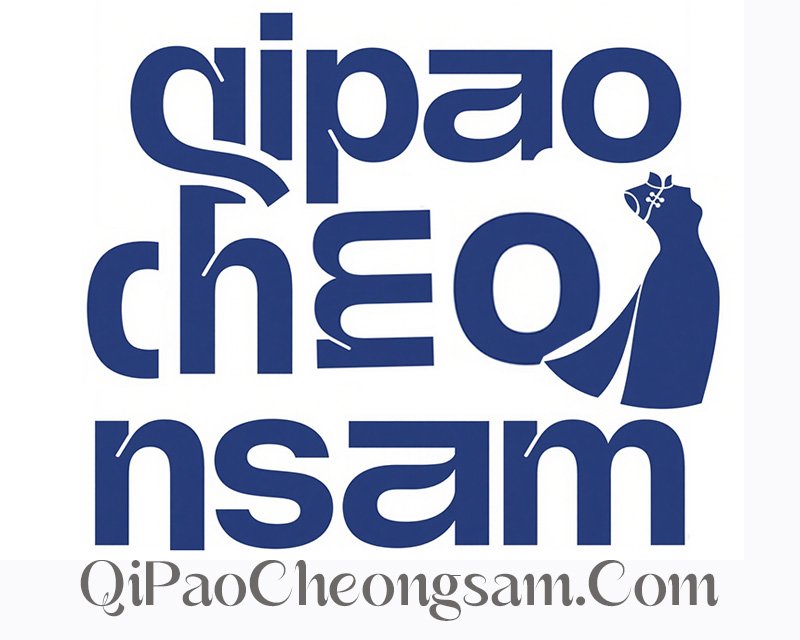Classification of Qipao (Cheongsam) Dress
As a traditional Chinese women’s garment, the qipao has evolved over centuries, resulting in a rich variety of styles. Below are the common classification criteria and specific types:
I. By Historical Period
- Qing Dynasty Qipao (Manchu Robe)
Loose and straightcut, with side slits, wide sleeves, and elaborate decorations (embroidery, piping, knotted buttons, etc.).
Worn primarily by Manchu women, often made of silk brocade. - Republic of China Era Qipao (1920s1940s)
ShanghaiStyle (Haipai) Qipao: Influenced by Western fashion, featuring a fitted waist, high slits, and sleeveless or short sleeves to accentuate feminine curves (as seen in vintage calendar posters).
BeijingStyle (Jingpai) Qipao: Retained traditional elements, with a looser, more modest cut and intricate embroidery. - Modern Adapted Qipao
Incorporates contemporary aesthetics, simplified decorations, and stretch fabrics for better comfort and practicality. II. By Cut and Style - Traditional FlatCut Qipao
Made with flatpanel construction, loose-fitting, ideal for traditional fabrics like silk satin.
Representative examples: Qing Dynasty qipao and some Beijing-style designs. - Modern Tailored Qipao
Uses Western-style draping and darts for a body-hugging silhouette.
Common in formal and evening wear. - Casual Modernized Qipao
Features: Aline hems, shorter lengths, or mixed designs for everyday wear. III. By Sleeve Style
Sleeveless: Popular in summer, highlights shoulder lines.
Short/Medium Sleeves: Classic choice for various occasions.
Long Sleeves: Worn in colder seasons, can be fitted or flared.
Flared/Lace Sleeves: Modern designs for a fashionable touch. IV. By Collar Style
High Neck (Yuanbao Collar): Traditional, elegant, and formal.
Low Neck (Square/V-Neck): Relaxed and modern.
Collarless: Minimalist, suitable for summer.
Droplet Collar: Features a teardrop-shaped cutout, blending classic and sensual styles. V. By Slit Height
Low Slit (1015 cm): Modest and suitable for daily wear.
Medium Slit (2030 cm): Classic balance of elegance and ease of movement.
High Slit (ThighLevel): Bold and stylish, often seen in evening gowns. VI. By Fabric and Craftsmanship - Traditional Fabrics
Silk, satin, gambiered gauze, brocade (for formal occasions).
Cotton or linen (casual wear). - Modern Fabrics
Lace, chiffon, velvet, organza (fashion-forward styles).
Stretch blends (enhanced comfort). - Decorative Techniques
Hand embroidery (Suzhou, Sichuan styles), knotted buttons (floral, straight), and piped edges. VII. By Occasion
Ceremonial/Wedding Qipao: Lavish embroidery, long trains.
Every day Qipao: Simple designs, breathable fabrics.
Stage Performance Qipao: Glamorous details (sequins, dramatic slits).
Professional Qipao: Kneelength, muted colors for work settings. VIII. Regional Variations
ShanghaiStyle (Haipai): Slimfit, modern influences.
SuzhouStyle (Supai): Delicate embroidery, soft elegance.
Cantonese Style (Yuepai): Vibrant colors, influenced by Guangdong embroidery. IX. Special Derivative Styles
Qipao Dress: Retains key elements (buttons, slits) but with Western dress structures.
Two-Piece Qipao: Separate top and skirt for versatility.
Men’s Changshan: A male counterpart from the Republic era, sharing origins with the qipao.
The classification of qipao reflects both its cultural heritage and innovative adaptations. Consider the occasion, body type, and personal style for the best fit when choosing.


